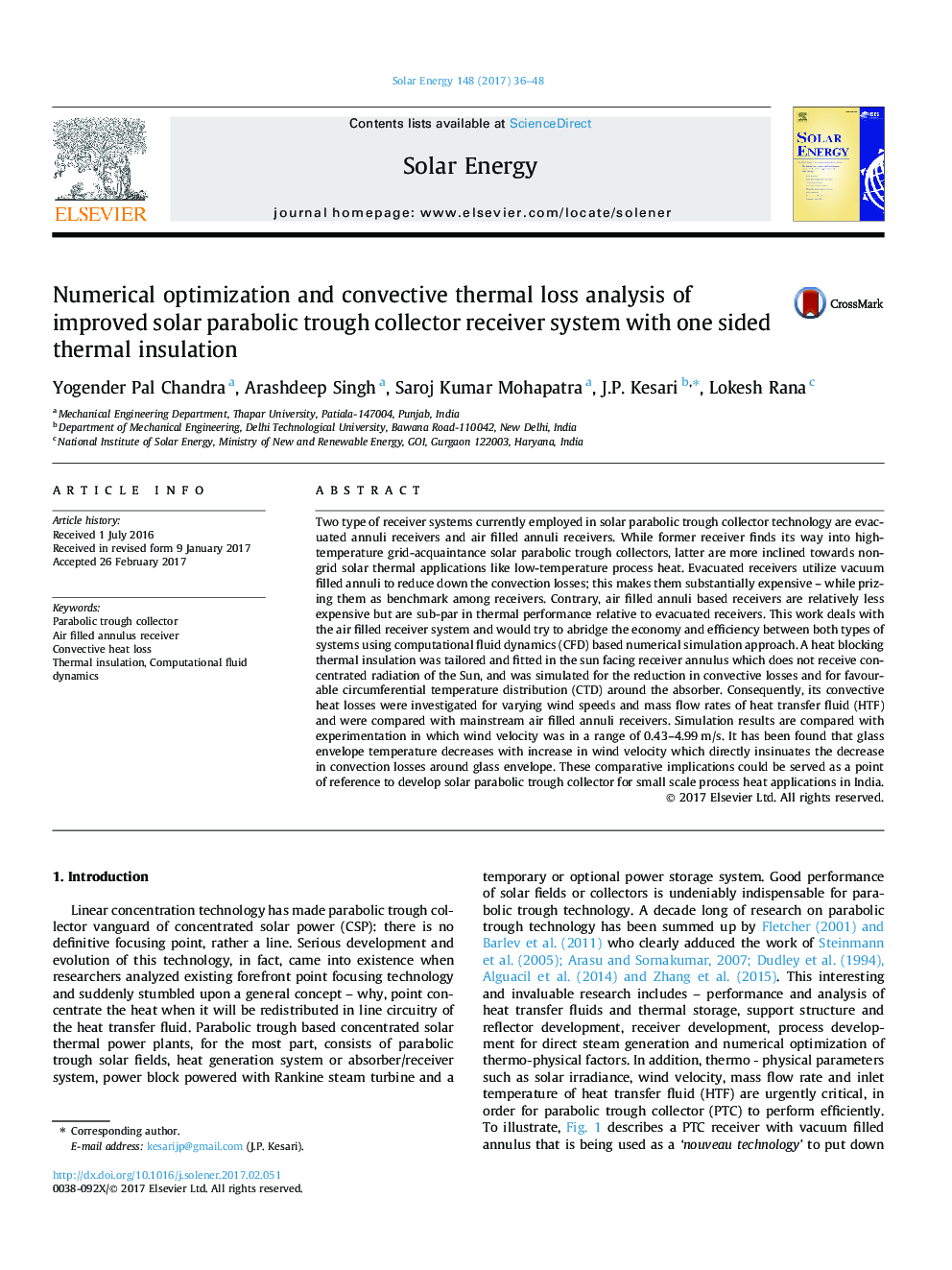| کد مقاله | کد نشریه | سال انتشار | مقاله انگلیسی | نسخه تمام متن |
|---|---|---|---|---|
| 5450978 | 1513070 | 2017 | 13 صفحه PDF | دانلود رایگان |
عنوان انگلیسی مقاله ISI
Numerical optimization and convective thermal loss analysis of improved solar parabolic trough collector receiver system with one sided thermal insulation
ترجمه فارسی عنوان
بهینه سازی عددی و تجزیه و تحلیل از دست دادن حرارتی کنونی از سیستم بهبود یافته بخار آبگرمکن خورشیدی با عایق حرارتی یک طرفه
دانلود مقاله + سفارش ترجمه
دانلود مقاله ISI انگلیسی
رایگان برای ایرانیان
کلمات کلیدی
جمع کننده پارابولیک، گیرنده رطوبت هوا، از دست دادن گرما تلفیقی، عایق حرارتی، دینامیک سیالات محاسباتی،
موضوعات مرتبط
مهندسی و علوم پایه
مهندسی انرژی
انرژی های تجدید پذیر، توسعه پایدار و محیط زیست
چکیده انگلیسی
Two type of receiver systems currently employed in solar parabolic trough collector technology are evacuated annuli receivers and air filled annuli receivers. While former receiver finds its way into high-temperature grid-acquaintance solar parabolic trough collectors, latter are more inclined towards non-grid solar thermal applications like low-temperature process heat. Evacuated receivers utilize vacuum filled annuli to reduce down the convection losses; this makes them substantially expensive - while prizing them as benchmark among receivers. Contrary, air filled annuli based receivers are relatively less expensive but are sub-par in thermal performance relative to evacuated receivers. This work deals with the air filled receiver system and would try to abridge the economy and efficiency between both types of systems using computational fluid dynamics (CFD) based numerical simulation approach. A heat blocking thermal insulation was tailored and fitted in the sun facing receiver annulus which does not receive concentrated radiation of the Sun, and was simulated for the reduction in convective losses and for favourable circumferential temperature distribution (CTD) around the absorber. Consequently, its convective heat losses were investigated for varying wind speeds and mass flow rates of heat transfer fluid (HTF) and were compared with mainstream air filled annuli receivers. Simulation results are compared with experimentation in which wind velocity was in a range of 0.43-4.99Â m/s. It has been found that glass envelope temperature decreases with increase in wind velocity which directly insinuates the decrease in convection losses around glass envelope. These comparative implications could be served as a point of reference to develop solar parabolic trough collector for small scale process heat applications in India.
ناشر
Database: Elsevier - ScienceDirect (ساینس دایرکت)
Journal: Solar Energy - Volume 148, 15 May 2017, Pages 36-48
Journal: Solar Energy - Volume 148, 15 May 2017, Pages 36-48
نویسندگان
Yogender Pal Chandra, Arashdeep Singh, Saroj Kumar Mohapatra, J.P. Kesari, Lokesh Rana,
